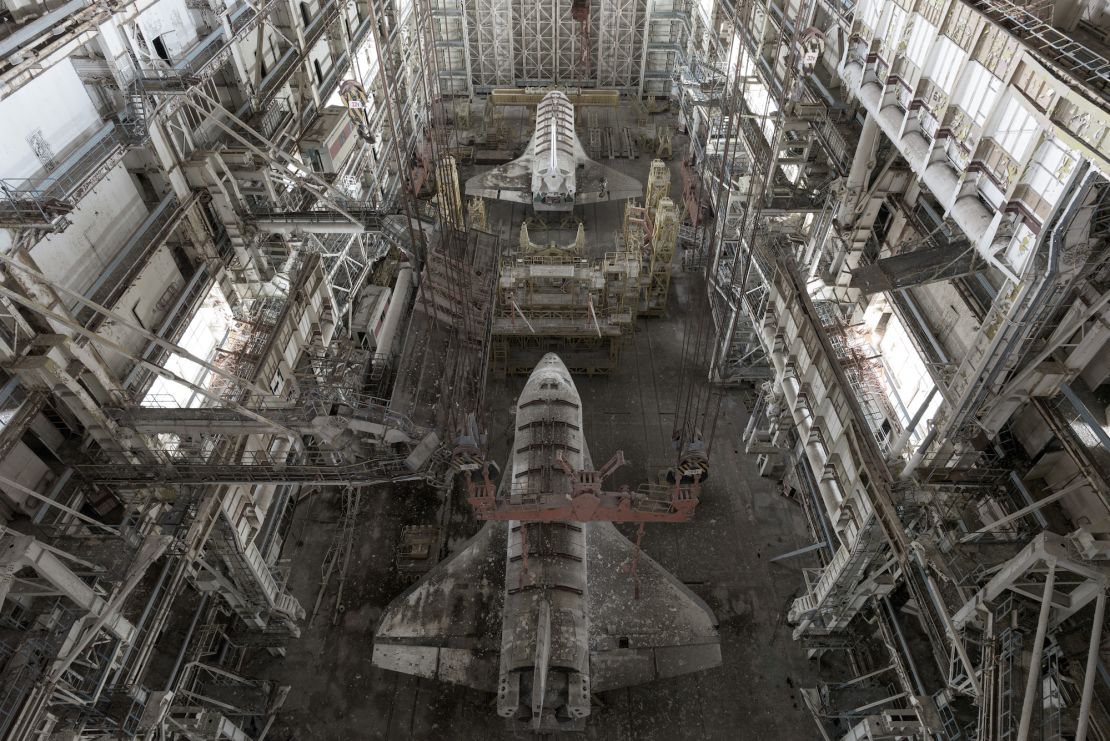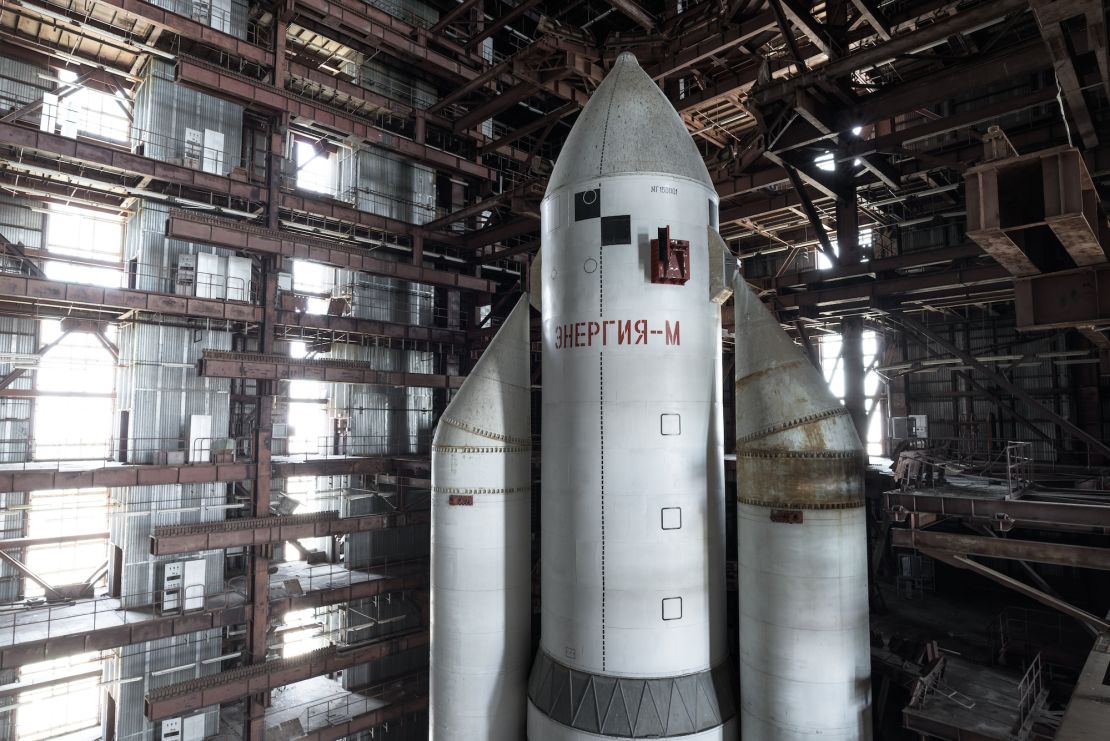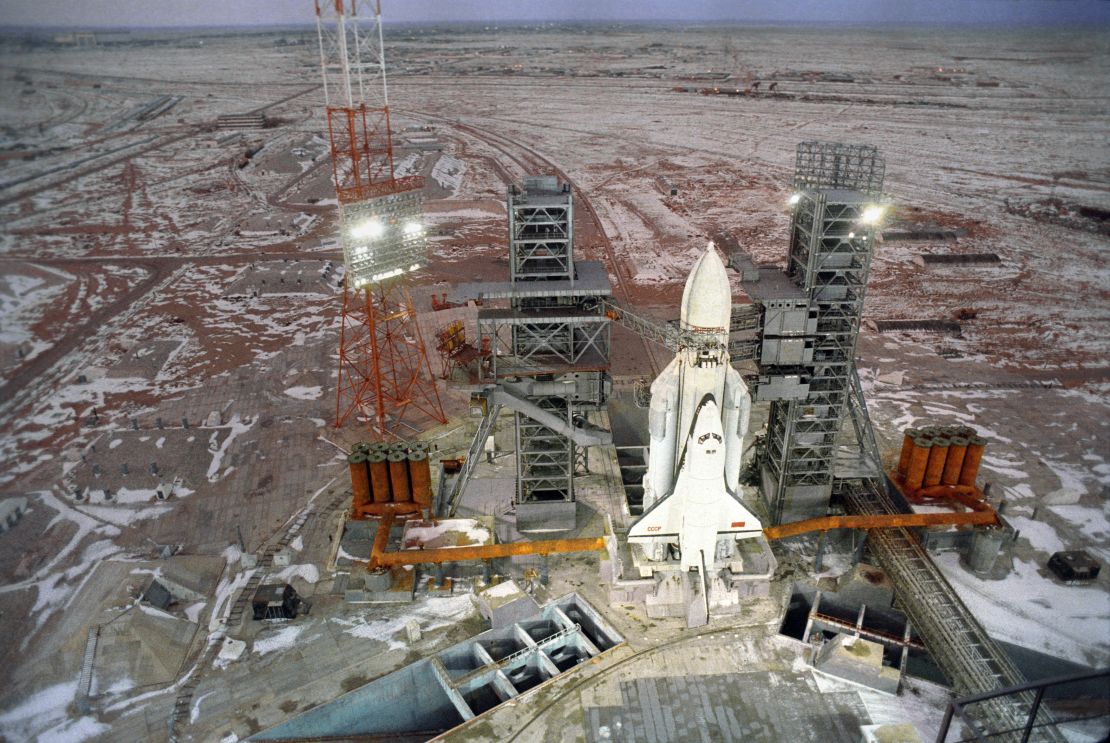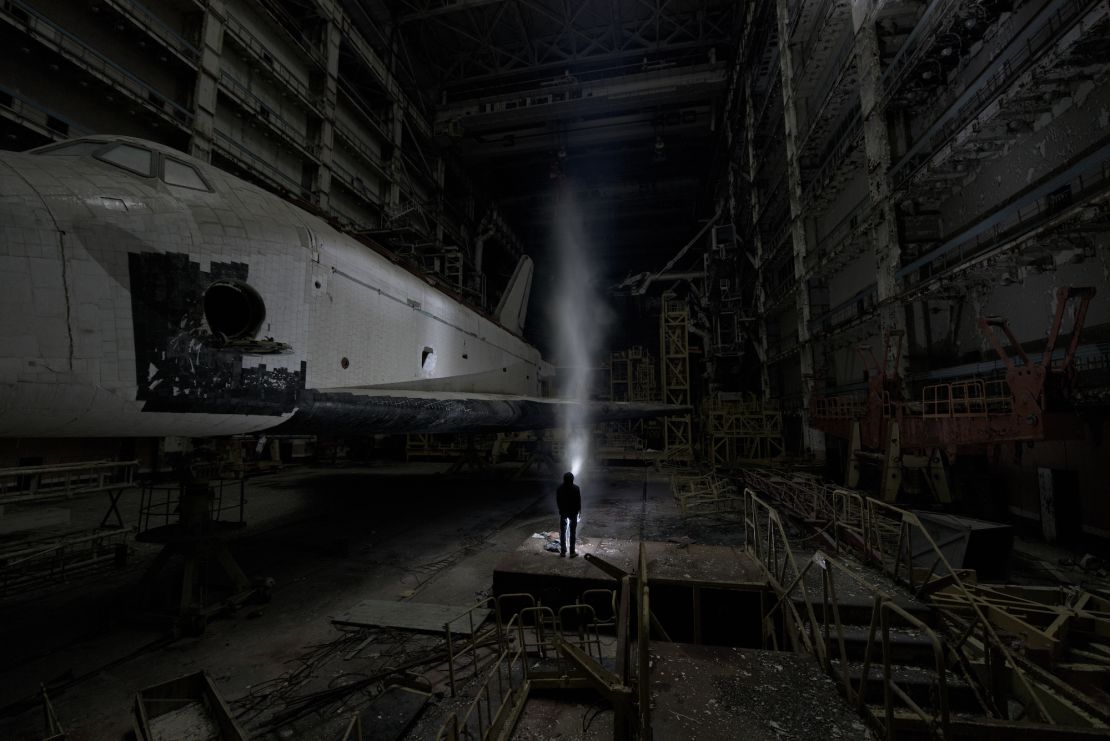It was the Soviet response to the space shuttle, designed to take the Cold War into space. But after just one flight, it was mothballed. Now, the ruins of what was called the Buran program are left to rust in the steppe of Kazakhstan.
Two shuttles and a rocket lie in disused hangars, not far from the launchpad of that first flight, at the Baikonur Cosmodrome. It’s an active spaceport about 1,500 miles southeast of Moscow, still used today to send and retrieve astronauts from the International Space Station.
The site is not open to the public, but a few adventurers have mustered the courage to sneak in and take a look.
Among them is French photographer David de Rueda, who visited the site three times between 2015 and 2017: “The space shuttles are only a few hundred meters from active facilities. Getting there was an epic adventure, we didn’t know if we would make it because the Kazakh steppe is a hostile environment. But it was entirely worth it. This place is unreal,” he said in an email interview.

Why so similar?
The design of the Buran (“blizzard” in Russian) was remarkably similar to that of the US shuttle. That’s no coincidence: “The Russians needed a vehicle of similar dimensions because they wanted to match the payload capacity of the space shuttle,” said Soviet space historian Bart Hendrickx in an email interview.
NASA’s shuttle was basically a space truck, designed to haul large cargo into orbit at the request of the Pentagon, which planned to use it to deploy military satellites. The USSR wanted a clone with the same ability: “The decision to build Buran was a response to the perceived military threat posed by the space shuttle. If the Americans hadn’t developed the shuttle, the Russians wouldn’t have developed Buran. To them it was just another part of the arms race,” said Hendrickx.
The first shuttle, Enterprise, had been completed for four years when the Soviets started building the inaugural Buran in 1980. No doubt, that time was spent also studying NASA’s designs: “There was an urge in the Soviet defense industry to blindly copy whatever the Americans built. Many Russian engineers say that the laws of aerodynamics left little room for other designs, but that’s hard to defend.” When the Buran was finally unveiled, in 1988, the similarities hitherto hidden by the shroud of secrecy of the Cold War became apparent. The New York Times wrote: “Even the paint job, white with black trim, is much the same.”

Structural differences
The two vehicles weren’t completely identical, though: under the skin were major structural differences that couldn’t be seen at a glance. Chiefly, the shuttle orbiter had its own engines to fly to space and used a large rocket as a fuel tank. The Buran orbiter, instead, had no engines and was merely attached to an even larger, full-fledged rocket called Energia. This allowed the Russians more flexibility in sending payloads to space.

The Buran also had emergency ejects seats for all crew members (absent on the US shuttles) and was free from the specific design flaws that contributed to the destruction of two shuttles in flight, the Challenger in 1986 and the Columbia in 2003. Oleg Kotov, a veteran Russian cosmonaut who’s spent more than 500 days in space, said in 2011 that these details could have made the Buran safer.
Hendrickx agrees: “In the end, the Russians developed a system that was more capable, more versatile and safer than the space shuttle, but by the time it was ready to fly, the Cold War was coming to an end and the project had lost much of its political support,” he said.
Just one flight
The Buran’s lone flight was completed successfully on Nov. 15 1988, just a year before the fall of the Berlin wall. Shortly after that mission, the program was suspended and president Boris Yeltsin eventually canceled it on June 30 1993: “After the collapse of the Soviet Union, there simply was no money left to use it for the civilian missions that it could still have performed, mainly space station support. There was no fundamental need for it in the immediate future of the Soviet space program,” said Hendrickx.

The vehicle used for the first flight, whose actual name was “Buran,” was put into storage in a building at the Baikonur spaceport, but due to neglect and the extreme temperature variations of the Kazakh steppe, the roof collapsed in 2002 and completely destroyed it.
Three more Burans were kept at the complex. One, a full scale test model, was left to rust outdoors, but in 2007 it was moved to the nearby Baikonur museum where it still stands as an exhibit. The remaining two are abandoned to this day in a hangar called “MZK,” which stands for “Assembly and Fueling Building.” One of them, nicknamed Ptichka (“Birdie”), was supposed to fly the second Buran mission, and it was more than 90 percent ready when the Buran project was canceled, according to Hendrickx. The other is a model used for ground tests, not designed to fly.
Why are they here?
Why were these vehicles, once the pride of the Soviet space program, left to rot in an unlocked building for nearly three decades? “For some reason, there’s never been enough interest and money to turn them into museum exhibits,” said Hendrickx. It might come down to logistics: “The Baikonur museum already has an orbiter and it has become virtually impossible to transport the vehicles to other locations in Russia or abroad. They’re not even owned any longer by the Russian government.”

In 2008, a German museum expressed interest in the Burans and offered $12 million for them, but the deal didn’t go through due to the excessive costs of flying them over with a special plane: “In the end, the museum purchased a different Buran orbiter that had somehow ended up in Bahrain. It was transported to Germany by boat,” said Hendrickx.
During a recent visit, Russian deputy prime minister Dmitry Rogozin hinted at plans to turn the former Buran launch pad into a museum. According to photographer David de Rueda, who last visited the site in August 2017, the Burans can still be saved: “The shuttles and the rocket have been exposed to dust, bird poop and extreme temperatures for almost 30 years. Time has left its mark. But other than that, they’re in rather good condition.”


![A building called MKZ houses two of the shuttles, only one of which was designed to fly into space: "This is the first photo ever showing both space shuttles and the entire MZK building. It's the main piece of my first trip [in 2015]. After the long trek through the steppe we were quite exhausted but we couldn't sleep because it was too cold. Being there was so unreal and exciting it gave me enough power to take the pictures I was looking for," said de Rueda in an email interview.](https://media.cnn.com/api/v1/images/stellar/prod/171031110926-baikonur-rueda1.jpg?q=w_2000,h_1335,x_0,y_0,c_fill/h_447)














